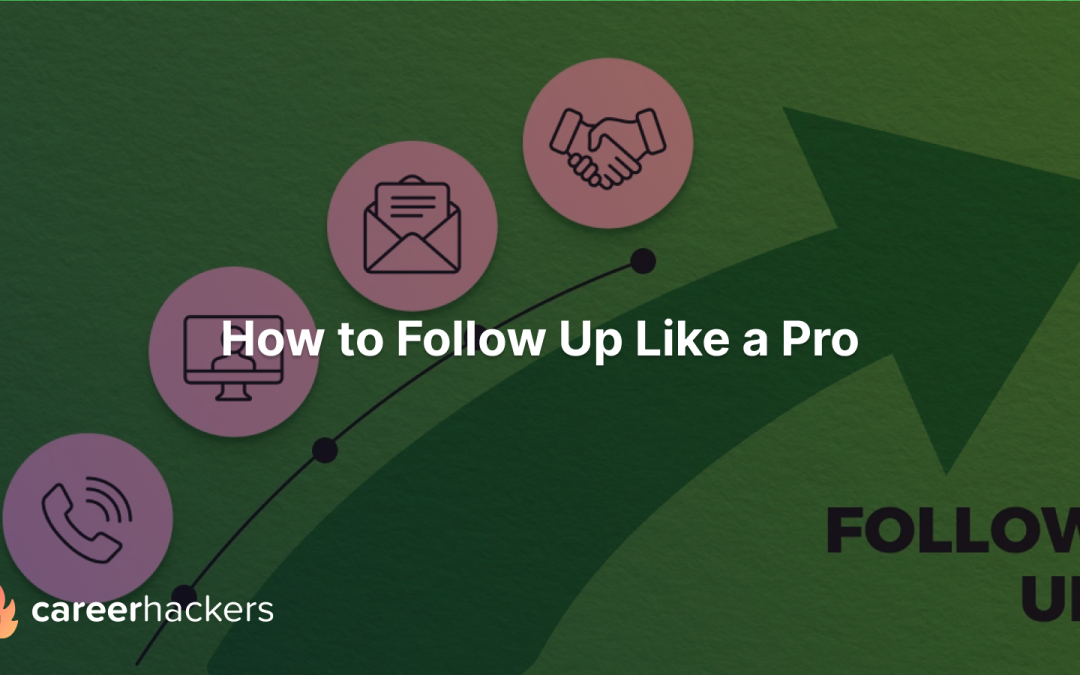The art of following up can make all the difference between standing out from the competition or fading into obscurity in the race for the job hunt.
As the job market evolves, you must adapt your strategies to increase your chances of success. So, here are some valuable tips and techniques to follow up like a pro:
Understanding the Follow-Up Process
Following up refers to reaching out to potential employers after specific interactions, such as submitting your application or completing an interview.
It sometimes involves proactively staying top-of-mind with recruiters and hiring managers through consistent communication and networking efforts.
When to Follow Up During Your Job Hunt
It is important to understand and build the instinct to know when to follow up. For beginners, one can follow this simple guide:
- Following up after submitting your application or video pitch: Preferably within the first few days, but surely within a week of submitting your application, send a polite email expressing your interest in the position and reiterating your qualifications. For video pitches, consider including a personalized message that highlights your enthusiasm.
- Following up after a short intro call: If you’ve had a brief introductory call with a potential employer, follow up within 24 hours to express your appreciation for the conversation, restate your interest, and inquire about the next steps.
- Following up after in-person or phone interviews: After an interview, send a thank-you note or email within 24 hours to express gratitude for the opportunity, reiterate your interest, and briefly mention any key points discussed during the interview.
- Following up after sending a response to a job offer: If you’ve received a job offer and need time to consider, it’s courteous to respond promptly with a thank-you email. Mention your enthusiasm for the opportunity, express your desire to carefully review the offer, and provide a specific timeline for your decision.
- Following up when specifically asked to do so: Sometimes, employers may request additional information or documents. In such cases, ensure you provide the requested materials promptly and follow up to confirm receipt or address any questions they may have.
How to Follow Up Like a Pro
Following up on One-Way Communications (Job Applications, Pitches, Emails)
i) Use the same communication method for follow-ups: If you initially submitted your application or pitch via email, follow up using the same medium. This consistency helps the recipient recognize your name and associate it with your initial communication.
ii) Time your follow-up based on urgency and desired outcomes: Aim to send your follow-up within one to two weeks of your initial communication. However, if the job posting specifies a timeline for the hiring process, adjust your follow-up accordingly to demonstrate your commitment and punctuality.
Following up on Mutual Exchanges (Phone Calls, Virtual Meetings, Job Interviews)
i) Promptly follow up after calls and interviews: Time is of the essence when it comes to follow-ups after calls or interviews. Send a personalized email or note within 24 hours to express your appreciation for the opportunity and reaffirm your interest in the position.
ii) Choose the appropriate channel for follow-up based on the previous communication: If you had an email exchange, continue using email for your follow-up. However, if a recruiter or hiring manager prefers phone calls, use that method instead. Adapting to their preferred communication style shows your attentiveness and respect.
Tools for Effective Job Hunt Follow-Ups
a) Use automation tools sparingly and judiciously. Personalized and thoughtful follow-ups carry more weight than generic automated messages. Tailor each follow-up according to the recipient and situation to leave a lasting impression.
b) Leverage reminder tools to stay organized and on track, such as calendar alerts or task management apps. Set reminders for key dates, interviews, and follow-up deadlines to stay organized and maintain a professional image.
c) Explore open trackers to monitor whether your follow-up emails have been opened. This knowledge can help you gauge the recipient’s interest and prompt you to follow up strategically if needed.
Pitfalls to Avoid in Follow-Up Communication
a) Forgetting to include all relevant recipients in your follow-up: Double-check that you include all necessary individuals in your follow-up emails, ensuring you address them correctly. This attention to detail reflects your professionalism and thoroughness.
b) Getting straight to the point and avoiding vague language: Be concise in your follow-up messages, but provide enough context to avoid confusion. Clearly state the purpose of your email and include any relevant information or documents to facilitate the recipient’s understanding.
c) Providing context in your follow-up to ensure clarity: If your follow-up references a specific conversation or interaction, provide a brief recap to help the recipient recall the details. This clarity will demonstrate your attentiveness and ensure a smoother flow of communication.
d) Personalize your follow-up messages to avoid sounding generic: Avoid using generic templates for your follow-up emails. Instead, personalize each message by referencing specific points discussed during interviews or interactions. Showing genuine interest and attention to detail can set you apart from other candidates.
e) Emphasizing the importance of consistent follow-up: Following up should not be a one-time event. Maintain consistent communication with potential employers to demonstrate your continued interest and dedication. However, strike a balance between being proactive and respectful, ensuring you don’t come across as overly pushy.
By mastering the art of following up, you can maximize your chances of success in the job hunt process. Remember, a cool and confident tone coupled with persistent and personalized follow-up can make a lasting impression on potential employers, ultimately leading to your job hunt success.

